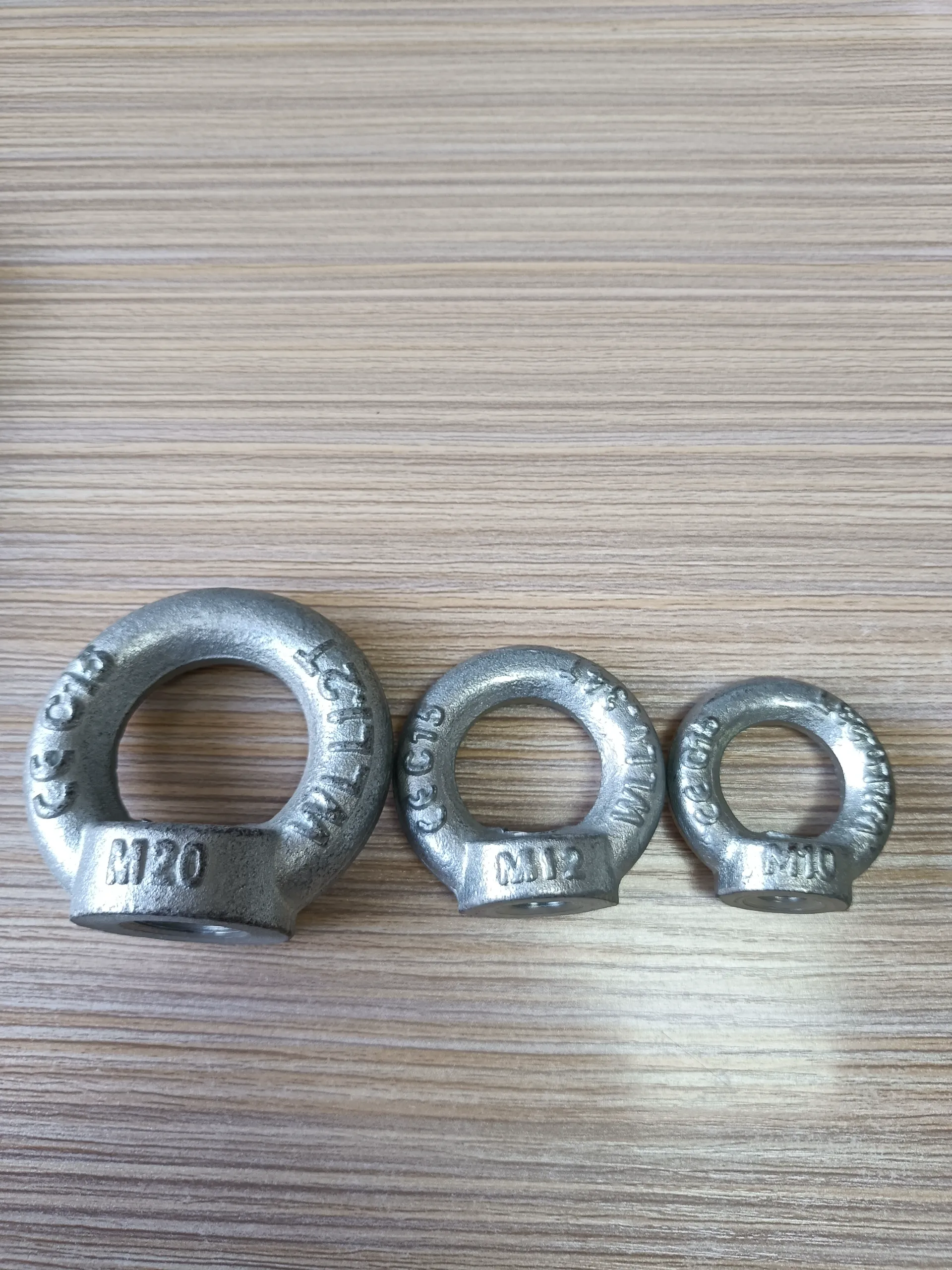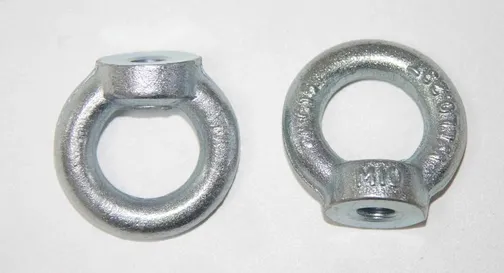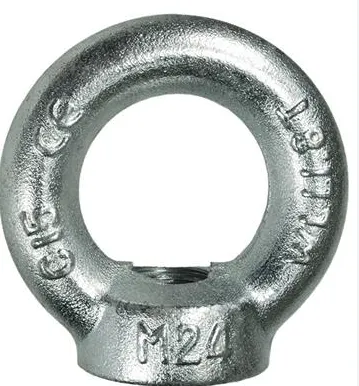خبریں
اکتوبر . 14, 2025 15:49 فہرست پر واپس جائیں۔
Overview of basic knowledge of lifting ring nuts
Hanging nut "is the abbreviation for lifting ring nut, which is a fastener used for lifting and fixing equipment

Material and grade
The material of the suspension ring nut directly determines its strength and corrosion resistance.
Common material types, brand characteristics, and applicable scenarios
Carbon steel such as C15E and 34CrMo4 are most commonly used, with high strength and economy. Usually, the surface treatment is zinc plating (bluing/white zinc plating) or Dacromet to prevent rust.
Stainless steel A2 (304) and A4 (316) have good corrosion resistance. A2 is suitable for general corrosive environments; A4 (acid resistant steel) has stronger resistance to chloride corrosion and is suitable for harsh environments such as chemical and marine industries.

Carrying capacity and angle
This is the core of safe use and must be strictly followed.
·Vertical load: When the tension direction is perpendicular to the ring surface (i.e. pulling straight upwards), the lifting ring nut can withstand its rated working load.
·Angular load: It is strictly prohibited for the lifting ring nut to reach the rated load in a diagonal state!
·When there is an angle, the actual force on the lifting ring will be much greater than the weight of the suspended object.
·For example, a lifting ring with a rated load of 1 ton may only be able to safely lift a weight of about 0.7 tons when pulled at a 45 degree angle; When pulled laterally at 90 degrees (with the ring flat), its load-bearing capacity will sharply decrease, and may even be only 20-30% of the vertical load. The vast majority of lifting ring nuts do not allow 90 degree lateral force.
·The specific relationship between the safe working load and the angle must be referred to the load angle table provided by the manufacturer.

Safety usage and inspection standards
Incorrect use is the main cause of accidents! Must strictly adhere to:
1. Correct installation:
·It must be fully screwed into the matching threaded hole to ensure that the effective engagement length of the thread is sufficient.
·Use appropriate tools to tighten and ensure that the ring surface is fully aligned with the surface of the connected component.
·It is strictly prohibited to use gaskets to compensate for insufficient engagement length or gaps.
2. Regular inspection:
·Pre use inspection: Before each use, the following items should be checked:
·Thread: Whether there is wear, rust, or deformation.
·Ring body: whether there are cracks, necking, excessive wear or deformation.
·Marking: Whether the identification of rated load, specifications and models is clear.
·Regular professional check: It is recommended to have a professional check every 6 to 12 months
The ring nut is a typical representative of "small parts, big responsibility". Using it professionally means:
·Understand standards: Understand the connotations of standards such as DIN 582.
·Selection: Choose appropriate specifications and materials based on load and environment.
·Correct use: Install and operate strictly in accordance with safety regulations.
·Frequent inspection: Establish and implement a strict inspection system to prevent problems before they arise.
-
Small components of lifting ring nuts with large load-bearing capacity
خبریںNov.24,2025
-
Flower basket bolts inject stable strength into your project
خبریںNov.18,2025
-
Although the lifting ring is small, its function is enormous
خبریںNov.12,2025
-
Lifting shackle: The indispensable "safety connecting ring" in lifting operations
خبریںNov.05,2025
-
Full analysis of lifting chain technology and application standards
خبریںOct.31,2025
-
Card head usage guide
خبریںOct.28,2025
